Related Research Articles

Under the Whyte notation for the classification of steam locomotives, 0-4-0 represents one of the simplest possible types, that with two axles and four coupled wheels, all of which are driven. The wheels on the earliest four-coupled locomotives were connected by a single gear wheel, but from 1825 the wheels were usually connected with coupling rods to form a single driven set.
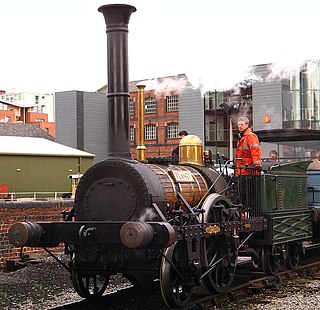
Under Whyte notation for the classification of steam locomotives, 2-2-0 represents the wheel arrangement of two leading wheels on one axle, two powered driving wheels on one axle, and no trailing wheels. This configuration, which became very popular during the 1830s, was commonly called the Planet type after the first locomotive, Robert Stephenson's Planet of 1830.
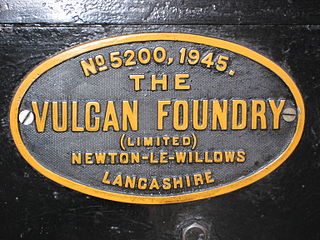
The Vulcan Foundry Limited was an English locomotive builder sited at Newton-le-Willows, Lancashire.
Birmingham and Derby Junction Railway Locomotives comprised twelve passenger locomotives and two goods locomotives. When the Birmingham and Derby Junction Railway (B&DJR) amalgamated with the Midland Counties Railway and the North Midland Railway to form the Midland Railway (MR) in May 1844, the former B&DJR locomotives were given MR numbers; previously they had been named, but not numbered. Most were renumbered in February 1847.
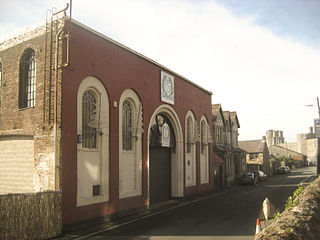
De Winton & Co (1854–1901) were engineers in Caernarfon, Wales. They built vertical boilered narrow gauge locomotives for use in Welsh slate mines and other industrial settings. At least six De Winton locomotives have been preserved. But these quarry tramway locomotives, for which in the 21st century they are largely remembered, were just a small part of this company's engineering output.
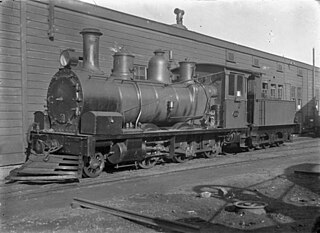
The NZR J class were steam locomotives with the wheel arrangement of 2-6-0 that were built in 1874 to operate on the New Zealand Railways (NZR). The J class was the first class of locomotive in New Zealand to have a tender; all previous classes were tank engines.

The NZR A class of 1873 consisted of three types of steam locomotives used on New Zealand's railway network of similar specification but differing detail. The first and most numerous were from the Dübs and Company, the next from the Wellington firm E.W. Mills Lion Foundry, and the last from the Scottish firm of Shanks. The specifications are for the Dubs Yorkshire engines.
Haigh Foundry was an ironworks and foundry in Haigh, Lancashire, which was notable for the manufacture of early steam locomotives.
R and W Hawthorn Ltd was a locomotive manufacturer in Newcastle upon Tyne, England, from 1817 until 1885.

Jones, Turner and Evans was a locomotive manufacturer in Newton-le-Willows, England from 1837, known as Jones and Potts between 1844 and 1852.

Bury, Curtis and Kennedy was a steam locomotive manufacturer in Liverpool, England.
Thompson & Cole was a Locomotive manufacturer at Hope Foundry, St George's Street, Little Bolton, England.

Rothwell, Hick and Rothwell was an engineering company in Bolton, England. Set up in 1822, the partners became interested in the production of steam locomotives after the Rainhill Trials. The company's first engine was Union, a vertical boiler, 2-2-0 with horizontal cylinders for the Bolton and Leigh Railway of which Hick and Rothwell were promoters and original shareholders, followed by three more locomotives the following year for American railways.

Neilson and Company was a locomotive manufacturer in Glasgow, Scotland.
George Forrester and Company was a British marine engine and locomotive manufacturer at Vauxhall Foundry in Liverpool, established by Scottish engineer George Forrester. The company opened in 1827 as iron founders and commenced building steam locomotives in 1834.
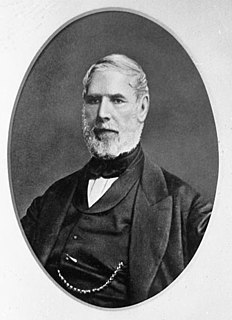
James Kennedy was a Scottish locomotive and marine engineer. He was born in the village of Gilmerton near Edinburgh, Scotland.
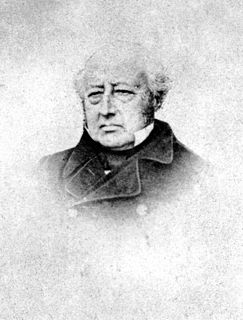
Edward Bury was an English locomotive manufacturer. Born in Salford, Lancashire, he was the son of a timber merchant and was educated at Chester.
John Grantham (1809–1874) was an English engineer, born in Croydon Surrey, who was involved in marine, railway and tramway engineering. He was the second son of another John Grantham. After leaving school, John (junior) worked with his father surveying routes for projected railway lines in England.

Swiftsure was first of eight or more similar locomotives with a single pair of driving wheels built by George Forrester and Company (Forresters) from 1834. The tank variant was the first passenger tank engine to enter service in the world.
References
- ↑ "Mather, Dixon and Co". Gracesguide.co.uk. 19 May 2012. Retrieved 12 June 2012.CS1 maint: discouraged parameter (link)
- ↑ "John Grantham". Gracesguide.co.uk. 2 April 2012. Retrieved 12 June 2012.CS1 maint: discouraged parameter (link)
- Lowe, J.W., (1989) British Steam Locomotive Builders, Guild Publishing